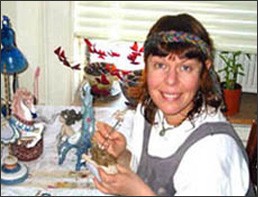A lot of people assume that if a valuable or sentimental object is broken, it has to be either replaced or thrown away. While it may be the case for functional item, such as coffee mugs, dinner plates, teakettles, etc. , decorative porcelain items can be repaired flawlessly and invisibly.
The difference between Conservation and Restoration
There’s a lot of talk today about the terms “conservation” and “restoration” and of the distinction between them. What do these terms mean exactly and how to they apply to china repair? Below are the definitions the Oxford English Dictionary gives:
- Conserve: to keep from harm and damage and to preserve for later use.
- Restore: to bring back or attempt to bring back to the original state by rebuilding, repairing, and repainting.
An ethical restorer is a conservator. Her purpose is stabilize an object and prevent deterioration in the future, as well as sculpt the missing part, retouch, and glaze, if necessary. At Luel Restoration Studio the word “repair” is synonymous with the world “conservation”.
Any ceramic restorer walks a fine line between restoring too much or too little. She can do do much that the piece looks brand new or too little, failing to perform the basic duty of restoration. There are a few simple rules to follow:
- Do not inflict further damage by careless handling
- Be sure that each stage of the process is reversible, by using only those materials that can be removed.
- Preserve and honor the integrity of the object by doing honest repairs.
- All materials must be fully compatible with the material the object is made of.
A lot of amateur restorers often use too much glue and bonding materials, which cause imbalance and poor alignment. They use wrong and harmful materials to fill in gaps. But most important, they use an old technique called “over-painting”, where a thick layer of paint mixed with various seals to create an illusion of a full restoration and cover up a poor repair.
While matching the color is always preferable to creating a color fill that resembles the color of the surface. However, it is better to create an excellent shade close to the body color is better, in conservation term, than overpainting on top of the original material.
Does Restoration Detracts from the Value?
An experienced and talented ceramic restorer can do a flawless and invisible repair on a broken item. No one should be able to tell the item had been broken or damaged, at least with a naked eye. But it’s only ethical to encourage the client to tell the truth to a potential buyer. There are professional conservation organizations in the United States and Canada that can offer advice to restorers and students of restoration.
Conservator-restorers must receive proper training, adhere to the rules and regulations of professional code, and undergo an annual review to demonstrate professional growth and development.
For all your restoration needs feel free to contact us any time.
Luel Restoration Studio
347-673-8831
luba@luelstudio.com


Speak Your Mind